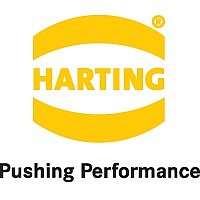09 47 900 0001 HARTING, 09 47 900 0001 Datasheet - Page 122

09 47 900 0001
Manufacturer Part Number
09 47 900 0001
Description
Ha-Vis Smart Patch Cable Detector
Manufacturer
HARTING
Datasheet
1.09_47_474_7201.pdf
(156 pages)
Specifications of 09 47 900 0001
Rohs Compliant
Yes
- Current page: 122 of 156
- Download datasheet (7Mb)
122
Interface connectors were designed for Pin in Hole
Intrusive Reflow with features like an inspection friendly
black colour, tape and reel packaging for automated
handling and it is self retaining on pcb via kinked pin.
The open design – moulded from high temperature
resistant material – ensures good heat distribution, so
that current solder temperature profiles can be used.
The special material of the insulation body withstands
also the higher temperatures of lead free soldering.
Advantages for using interface connectors are:
Application of solder paste
Before the components are assembled, solder paste
is applied to all the solder pads and the plated through
holes. Usually a screen printing process is used for
this purpose. A squeegee moves across the pcb,
which is masked with screens and presses the solder
paste into all unmasked areas. A good solder joint
is basically determined by the amount of the applied
solder paste. Only a few parameters (illustrated on the
right) will lead to the right quantity.
As an alternative to screen printing, the solder
paste can be applied by means of a dispenser. A
high-precision robot moves the dispenser to all re-
quired positions on the pcb. The dispensing method
is particularly suitable for small pcb’s or applica-
tions which demand high precision and flexibility in
dispensing volumes.
●
●
●
●
●
Partial dip soldering or press-in
is no longer required
High mechanical stability
Complete compatibility
with Surface Mount Technology
Savings through integration
into the automated assembly process
Reduced floor space in the production plant
Bellows for SMC
Dispenser in operation
Solder paste volume
There are numerous scientific studies dealing with
calculation of the required quantity of solder paste.
These studies use various parameters, e.g. the
shrinking factor of the paste during soldering or the
thickness of the screens used for masking the pcb.
Since such calculation methods are complicated to
apply, the following rule of thumb has proved valuable
in practice:
Requirements for the solder connection
At the beginning of a new production batch, the pro-
cess parameters, such as quantity of solder paste
and soldering temperature, can be set by interpreting
simple cross-sections of the soldered connection. A
reliable measure for achieving optimum parameters
is the quantity of solder required to fill the hole. In
soldered connections of high quality, the holes are
filled to between 75 % and 100 %.
Volume of solder paste
Plated through hole with connector termination
V
in which:
V
V
V
Comment: the multiplier “2” compensates for
solder paste shrinkage during soldering. For
this purpose, it was assumed that 50 % of the
paste consists of the actual solder, the other
50 % being soldering aids.
General information
Paste
H
P
Paste
= 2(V
= Required volume of solder paste
= Volume of the plated through hole
= Volume of the connector termination
in the hole
H
– V
P
)
Connector
termination
pcb
Related parts for 09 47 900 0001
Image
Part Number
Description
Manufacturer
Datasheet
Request
R

Part Number:
Description:
CONN HOUSING 6POS .156 W/O RAMP
Manufacturer:
Molex Inc
Datasheet:

Part Number:
Description:
CONN HOUSING 3POS .156 W/RAMP
Manufacturer:
Molex Inc
Datasheet:

Part Number:
Description:
CONN HOUSING 3POS .156 W/POLAR
Manufacturer:
Molex Inc
Datasheet:

Part Number:
Description:
CONN HOUSING 5POS .156 W/RAMP
Manufacturer:
Molex Inc
Datasheet:

Part Number:
Description:
CONN HOUSING 5POS .156 W/POLAR
Manufacturer:
Molex Inc
Datasheet:

Part Number:
Description:
CONN HOUSING 6POS .156 W/RAMP
Manufacturer:
Molex Inc
Datasheet:

Part Number:
Description:
CONN HOUSING 6POS .156 W/RAMP
Manufacturer:
Molex Inc
Datasheet:

Part Number:
Description:
CONN HOUSING 6POS .156 W/POLAR
Manufacturer:
Molex Inc
Datasheet:

Part Number:
Description:
CONN HOUSING 8POS .156 W/RAMP
Manufacturer:
Molex Inc
Datasheet:

Part Number:
Description:
CONN HOUSING 9POS .156 W/RAMP
Manufacturer:
Molex Inc
Datasheet:











